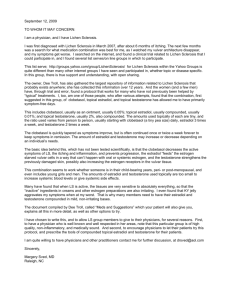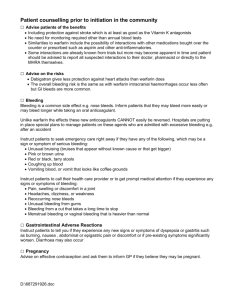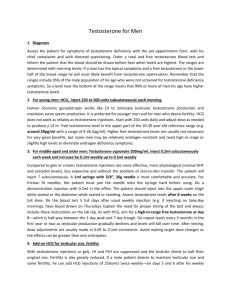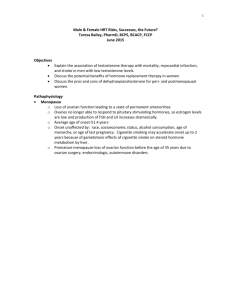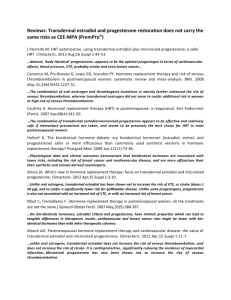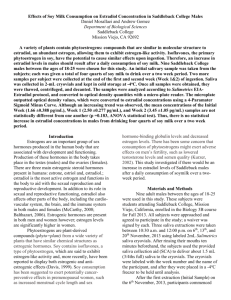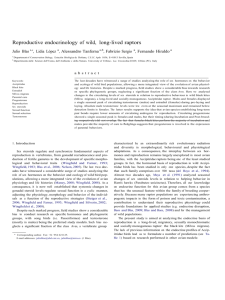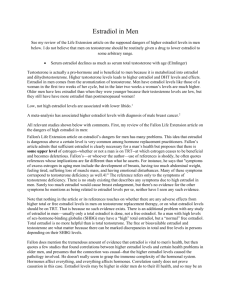EPTTroubleshootingPr..
advertisement
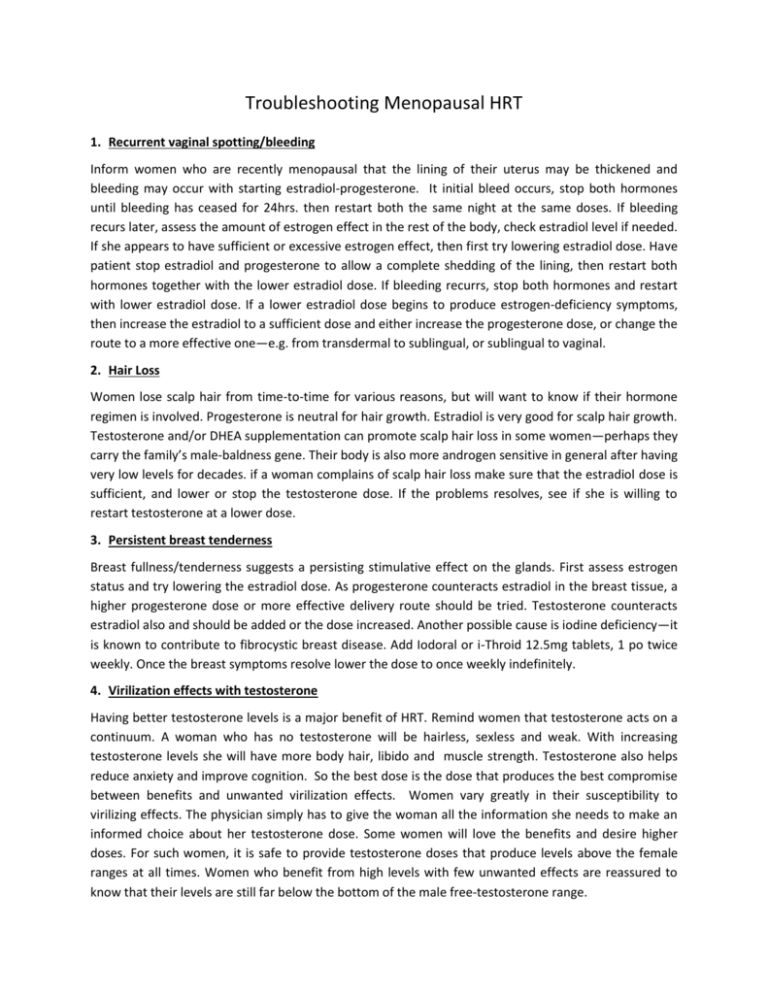
Troubleshooting Menopausal HRT 1. Recurrent vaginal spotting/bleeding Inform women who are recently menopausal that the lining of their uterus may be thickened and bleeding may occur with starting estradiol-progesterone. It initial bleed occurs, stop both hormones until bleeding has ceased for 24hrs. then restart both the same night at the same doses. If bleeding recurs later, assess the amount of estrogen effect in the rest of the body, check estradiol level if needed. If she appears to have sufficient or excessive estrogen effect, then first try lowering estradiol dose. Have patient stop estradiol and progesterone to allow a complete shedding of the lining, then restart both hormones together with the lower estradiol dose. If bleeding recurrs, stop both hormones and restart with lower estradiol dose. If a lower estradiol dose begins to produce estrogen-deficiency symptoms, then increase the estradiol to a sufficient dose and either increase the progesterone dose, or change the route to a more effective one—e.g. from transdermal to sublingual, or sublingual to vaginal. 2. Hair Loss Women lose scalp hair from time-to-time for various reasons, but will want to know if their hormone regimen is involved. Progesterone is neutral for hair growth. Estradiol is very good for scalp hair growth. Testosterone and/or DHEA supplementation can promote scalp hair loss in some women—perhaps they carry the family’s male-baldness gene. Their body is also more androgen sensitive in general after having very low levels for decades. if a woman complains of scalp hair loss make sure that the estradiol dose is sufficient, and lower or stop the testosterone dose. If the problems resolves, see if she is willing to restart testosterone at a lower dose. 3. Persistent breast tenderness Breast fullness/tenderness suggests a persisting stimulative effect on the glands. First assess estrogen status and try lowering the estradiol dose. As progesterone counteracts estradiol in the breast tissue, a higher progesterone dose or more effective delivery route should be tried. Testosterone counteracts estradiol also and should be added or the dose increased. Another possible cause is iodine deficiency—it is known to contribute to fibrocystic breast disease. Add Iodoral or i-Throid 12.5mg tablets, 1 po twice weekly. Once the breast symptoms resolve lower the dose to once weekly indefinitely. 4. Virilization effects with testosterone Having better testosterone levels is a major benefit of HRT. Remind women that testosterone acts on a continuum. A woman who has no testosterone will be hairless, sexless and weak. With increasing testosterone levels she will have more body hair, libido and muscle strength. Testosterone also helps reduce anxiety and improve cognition. So the best dose is the dose that produces the best compromise between benefits and unwanted virilization effects. Women vary greatly in their susceptibility to virilizing effects. The physician simply has to give the woman all the information she needs to make an informed choice about her testosterone dose. Some women will love the benefits and desire higher doses. For such women, it is safe to provide testosterone doses that produce levels above the female ranges at all times. Women who benefit from high levels with few unwanted effects are reassured to know that their levels are still far below the bottom of the male free-testosterone range.
